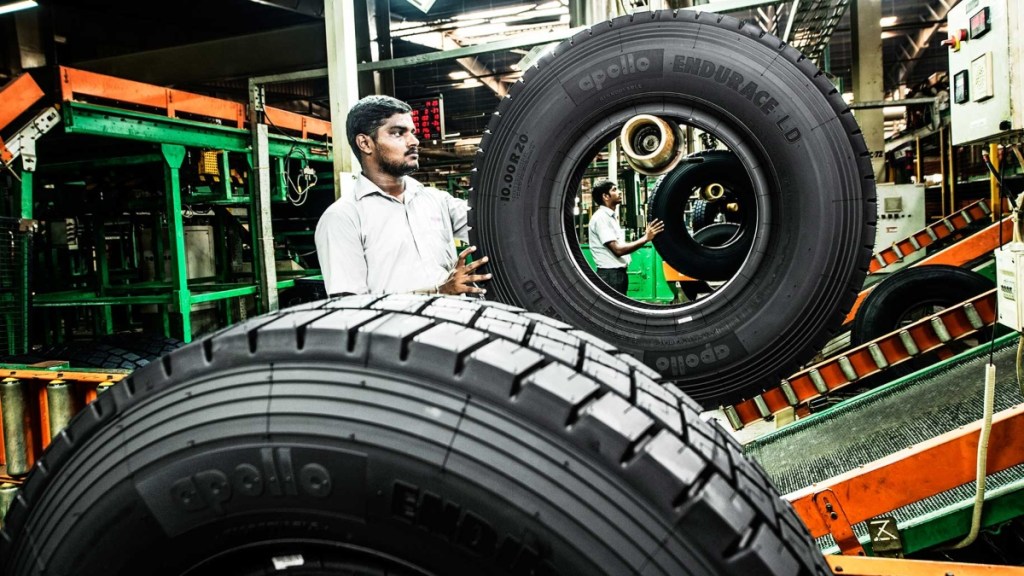Tyre makers are expected to post revenue growth of 7-8 per cent this fiscal, driven by a 3-4 per cent increase in both realisations and volume, stated a report by CRISIL Ratings. Per the report, revenue will grow in single digit for the second straight year (albeit nearly double that of last fiscal) and after logging a compound annual growth rate of 21 per cent between fiscals 2021 and 2023.
With tyre makers raising prices gradually to offset the surge in the price of natural rubber, realisation growth is expected to remain staggered throughout this fiscal. Natural rubber constitutes about half of the raw materials needed. Volume growth, meanwhile, will be driven by replacement demand.
During the fiscal, the high natural rubber prices and limited ability to pass on these costs due to modest volume growth will pull operating profitability down approximately 300 basis points (bps). Cash flow, though moderately affected, will still be sizeable.
Strong balance sheets and gradual capacity expansion will keep the credit profiles of tyre makers stable. CRISIL Ratings analysed the top six tyre markets, accounting for around 87 per cent of the industry’s revenue, to report the findings.
Anuj Sethi, Senior Director, CRISIL Ratings, said, “Domestic demand accounts for ~75 per cent of the industry’s sales (in tonnage terms), while the rest is exported. About two-thirds of the domestic demand is from the replacement segment and the rest is from original equipment manufacturers (OEMs). This fiscal, replacement demand mainly from commercial and passenger vehicles, will drive volume growth, while OEM demand is expected to rise only 1-2 per cent due to slow growth in commercial vehicle sales.”
Meanwhile, growth on the exports side is expected to be muted at 2-3 per cent this fiscal due to weak demand in key markets such as North America and Europe, which make up about 60 per cent of India’s total exports. Moreover, supply-chain disruptions due to geopolitical concerns have led to higher freight costs and longer transit times, weighing on export demand.
With increased freight costs and the rise in natural rubber prices being passed on only partially due to modest demand, operating profitability of tyre makers will drop to around 13 per cent this fiscal from around 16 per cent last fiscal, the report added.
The sharp rise in the prices of natural rubber is due to a global shortage caused by inclement weather in major producing countries such as Thailand and Vietnam, which account for about half of the global production.
The other key raw materials in tyre production, such as nylon tyre cord, carbon black, styrene butadiene rubber and poly-butadiene rubber, are derivatives of crude oil and, hence, subject to price fluctuations.
Naren Kartic.K, Associate Director, CRISIL Ratings, said, “To support domestic tyre manufacturers, the Indian government has extended the countervailing duty on Chinese radial tyres for five years to ease competition. Plus, given the sluggish demand and pressure on operating margins, tyre makers are implementing appropriate price increases and prudent capital expenditure to ensure that capital efficiencies remain satisfactory. With capacity utilisation at ~80 per cent, tyre manufacturers rated by us are investing ~Rs 5,500 crore this fiscal, slightly lower than last fiscal, with a focus on necessary capacity enhancements and debottlenecking.”
Prudent capex and healthy cash generation will obviate significant debt addition, resulting in stable credit profiles. Gearing and interest coverage are seen at around 0.3 times and 7-8 times, respectively, similar to last fiscal. Key monitorables, per CRISIL, include raw material prices, OEM demand, duty changes and Extended Producer Responsibility regulations.

